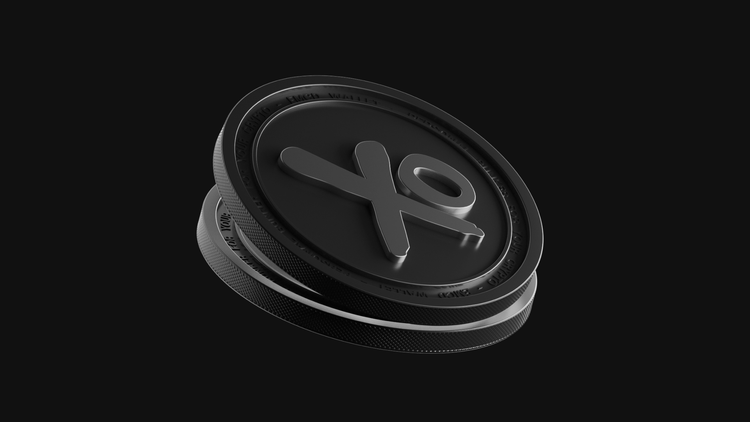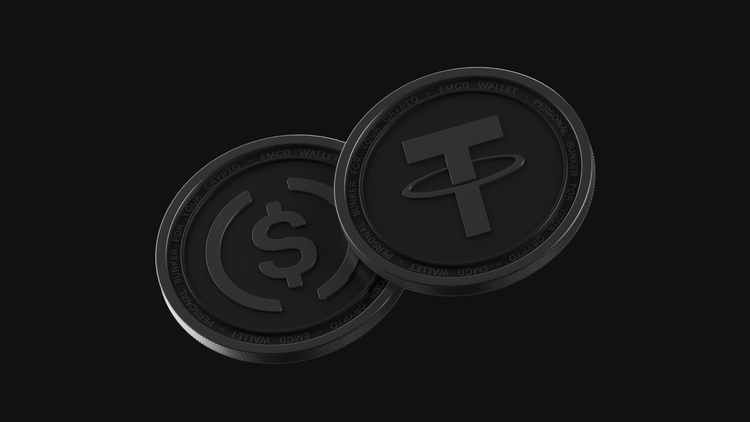Best Stablecoin Saving Strategies

Stablecoins have become one of the most popular tools for digital savings and earning passive income. They combine the stability of fiat currencies with the accessibility of crypto. The best stablecoin saving strategies help users keep their assets protected from volatility while earning regular interest over time.
At EMCD, we understand that choosing the right method to earn with stablecoins can be challenging — this guide explains how you can use them efficiently and safely, and how to maximize stablecoin returns without unnecessary risk.
Why stablecoins are popular for savings
Stablecoins are crypto assets pegged to traditional currencies such as USD or EUR. This means their price stays stable while allowing users to store and transfer money quickly across borders.
Unlike volatile crypto assets, stablecoins in most cases are backed by real reserves or collateral, which can be fiat, bonds, or other on-chain assets.
Using stablecoins in savings accounts gives users the ability to earn regular interest and access higher returns than traditional banking products. The flexibility and security of the crypto infrastructure make it possible to use stablecoins for both short-term and long-term accumulation goals. You can keep your crypto assets safe from the market’s ups and downs while growing your balance daily.
Understanding stablecoins and their role in crypto
There are several types of stablecoins, each serving a different financial purpose:
| Type | Example | How it works |
| Fiat-backed | USDT, USDC | Collateralised 1:1 with reserves held by issuers. |
| Crypto-backed | DAI, sUSD | Backed by overcollateralised crypto holdings. |
| Algorithmic | FRAX, USDD | Use algorithms and arbitrage to maintain stability. |
Stablecoins can be used for payments, trading, or savings. When integrated into modern platforms, they enable users to earn interest on their holdings or participate in financial ecosystems that offer additional income streams.
Even if you do not trade actively, stablecoins allow you can store and grow funds efficiently.
Centralized platforms for stablecoin savings
Centralized exchanges and fintech apps are among the best platforms for stablecoin savings. They provide easy onboarding, customer support, and interest rates higher than most banks.
Popular examples include Binance Earn, OKX Earn, and EMCD Coinhold — each offering flexible or fixed terms with APY that may be adjusted based on market conditions.
Advantages:
- Simple interface suitable for beginners
- Fixed or flexible savings options
- Security managed by the platform
Disadvantages:
- Requires KYC verification
- Interest rates depend on internal liquidity
- Funds stored with custodians
These services are ideal if you are looking for predictable returns and convenience without managing complex wallets or DeFi tools. EMCD’s Coinhold, for example, enables partners and users to maximize yield safely while avoiding the common risks of decentralized systems.
DeFi protocols for earning yield on stablecoins
For users with more experience, decentralized finance (DeFi) platforms can be an attractive way to earn interest on stablecoins.
Protocols such as Aave, Compound, or Curve allow users to deposit their crypto assets into liquidity pools and receive rewards from transaction fees and lending operations.
These DeFi models usually offer the highest APY for stablecoins 2025, but risks are also higher. Smart contract vulnerabilities, governance changes, and temporary loss of liquidity may be factors to consider.
However, some projects continue making DeFi safer through audits, insurance funds, and transparent reporting.
Example DeFi yields comparison:
| Protocol | Approx. APY | Risk level |
| Aave | 5–7% | Low to medium |
| Curve | 7–10% | Medium |
| Yearn Finance | 8–12% | Medium to high |
Here, DeFi flexibility enables you can design your own saving strategy by mixing pools, tokens, and timeframes — always aiming to maximize returns while staying aware of security requirements.
Using liquidity pools with stablecoins
Liquidity pools represent one of the most dynamic strategies in DeFi. By adding stablecoins into automated market makers (AMMs) like Uniswap or PancakeSwap, users receive a share of trading fees.
However, the main risks include impermanent loss, fluctuating interest rates, and potential smart contract bugs.
For those willing to keep their funds working, it is crucial to maximize diversification and use only audited protocols.
Adding stablecoins to a liquidity pool can still be profitable if done carefully, especially when focusing on low-volatility pairs like coin-to-coin swaps (for example, USDT/USDC).
Staking stablecoins for passive income
Many ecosystems now support staking stablecoins, locking assets for a fixed period to receive passive income from stablecoins.
The reward depends on the staking term, the size of your deposit, and the crypto platform’s performance.
Unlike lending or liquidity mining, staking offers a predictable daily compounding interest stablecoins model, which helps build steady income over time.
Platforms like EMCD Coinhold or AQRU enable users to earn stable yields while maintaining transparent conditions and formal agreements.
If you are seeking an easier path to stablecoin investment, staking options can provide a balance between yield and safety — an ideal entry point for anyone starting out in 2025.
Diversifying across platforms to reduce risk
When building a saving strategy, diversification is key.
Experts recommend splitting your funds across several platforms, both centralized and decentralized, to balance rewards and risk.
Stablecoin savings for beginners can start small, with a mix of trusted custodial accounts and selected DeFi protocols.
Suggested diversification example:
- 50% in a centralized platform with fixed APY (e.g., Coinhold or Binance Earn)
- 30% in DeFi liquidity pools for higher potential returns
- 20% in staking programs with daily compounding
Diversification not only increases potential income but also protects your stablecoins against unexpected market events. It ensures you can earn the highest returns while keeping flexibility and safety balanced.
Managing risks: security, regulation, and market stability
Even stablecoins are not completely risk-free.
Users need to understand where the reserves are stored, which institutions audit them, and how the platform manages custody.
Key points to consider:
- Regulatory clarity of the issuer (for example, USDC is regularly audited)
- Transparency of reserves and collateral ratios
- Platform’s insurance and security practices
- Reputation and compliance with AML/KYC standards
Remember: stability doesn’t mean no risk, it means predictable value under normal market conditions. Always make sure you understand the way your funds are used through any platform or and services connected to it. The team behind us continues improving standards of safety and accessibility at every level of our ecosystem.
Final thoughts and recommendations
Stablecoin saving strategies give users a balance between financial safety and flexible earning options.
For beginners, centralized platforms offer the easiest start; for advanced users, DeFi unlocks additional yield opportunities.
To maximize results:
- Compare APY rates regularly
- Avoid unverified projects
- Diversify holdings and withdraw profits periodically
- Focus on regulated, transparent platforms
It is possible to earn steady returns while keeping your crypto secure — but only with the right mix of planning, diversification, and awareness.
If you want to learn more about stablecoin strategies or how to optimise your investment, explore our educational guides and ecosystem updates. We continue making crypto education accessible for everyone, helping users understand, compare, and apply safe saving methods with the highest-performing stablecoins available today.
FAQ
What are the safest stablecoins to use for savings?
Stablecoins backed by fiat reserves and regularly audited, such as USDC or USDT, are considered safer options.
Should I use centralized exchanges or DeFi for stablecoin savings?
Both have benefits — centralized exchanges are easier for beginners, while DeFi offers higher potential yields with more risks.
How much yield can I realistically expect from stablecoin savings?
Typical interest rates range from 5% to 12% APY, depending on the platform and market demand.
Are stablecoin savings accounts completely risk-free?
No, they are not. All investments may be subject to market, technical, or regulatory risks.
Can I lose my funds in a stablecoin savings strategy?
Yes, if you use unverified platforms or fail to follow security best practices.
What’s the best stablecoin saving strategy for beginners?
Start small, choose trusted platforms, and diversify — this means keeping part of your funds on regulated custodial accounts and part in audited DeFi pools.




